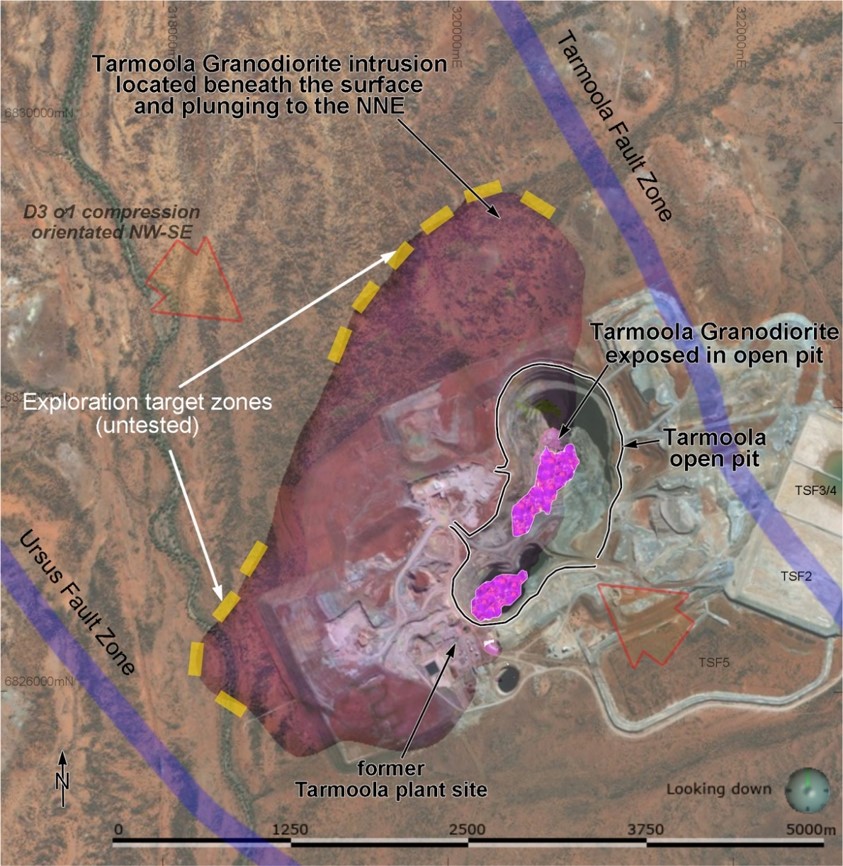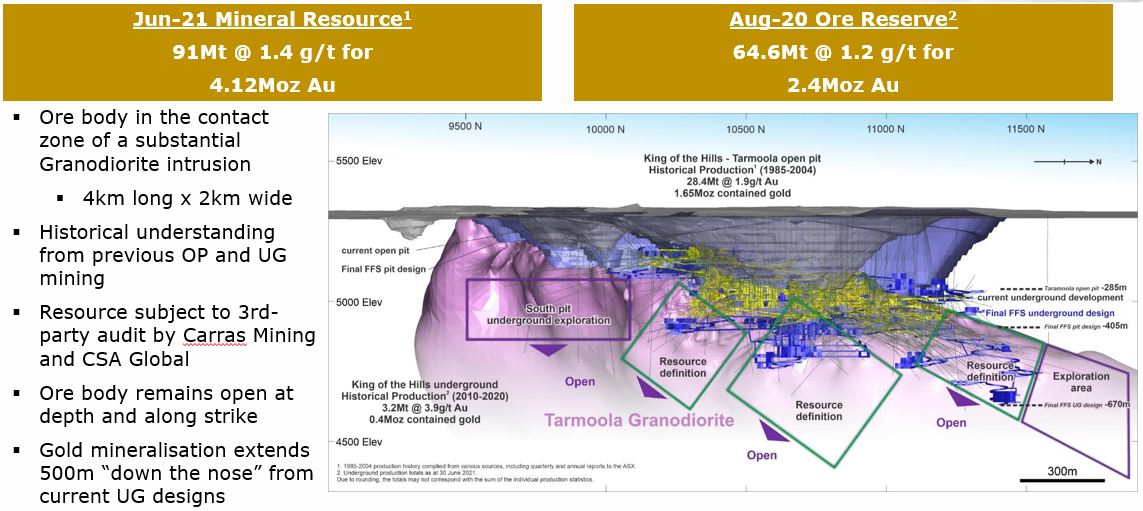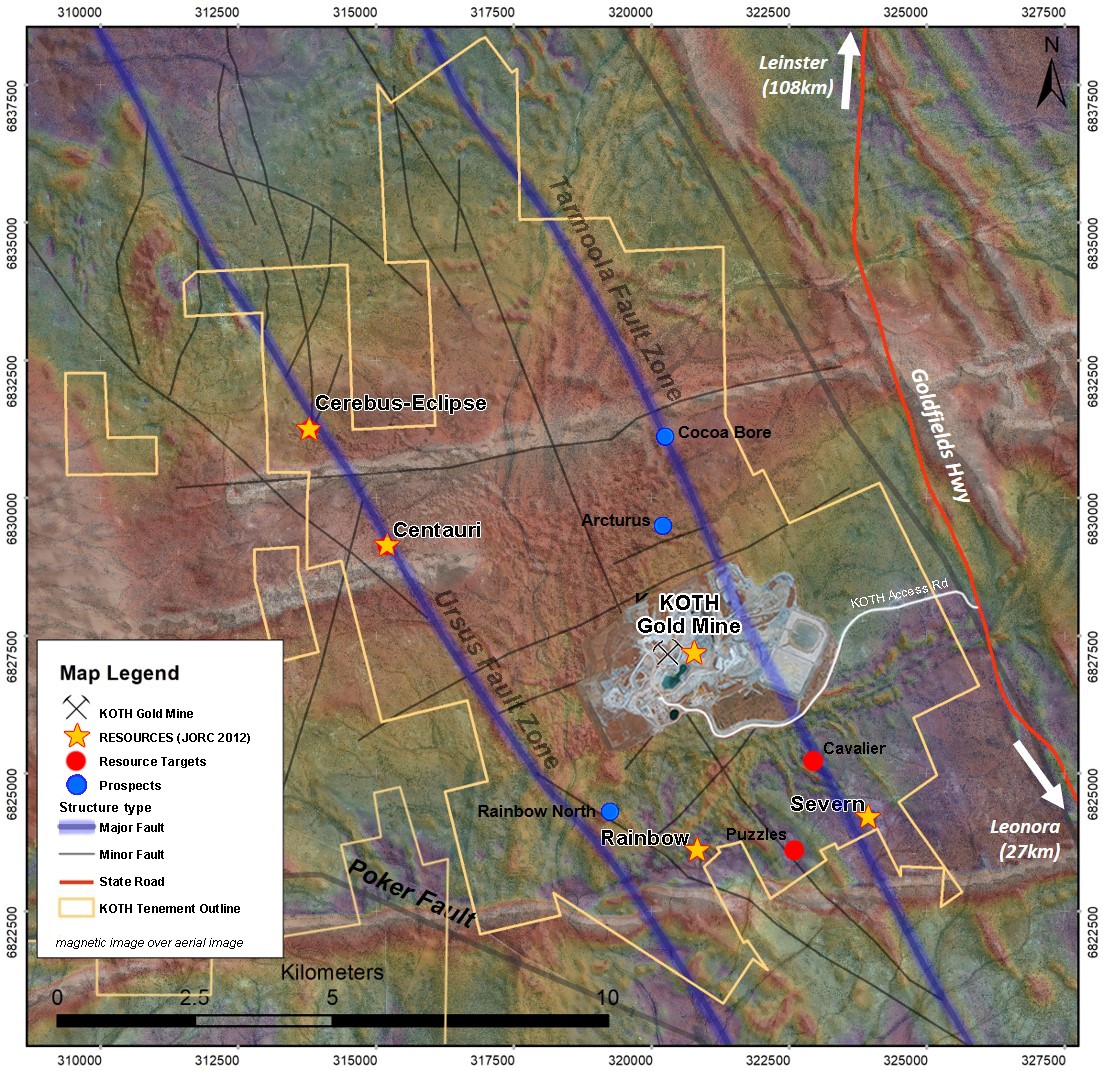King of the Hills Regional
King of the Hills is rapidly emerging as one of Australia’s premier long-life, low-cost gold projects.
To date, Red 5 has defined a bulk mining Mineral Resource of 4.12Moz of contained gold at King of the Hills, with exploration programs focused on expanding this bulk mining Resource and extending the underground mine life.
Expanding the bulk Mineral Resource - mineralisation open in all directions
The bulk mining opportunity at King of the Hills centres on a major granodiorite intrusion known as the Tarmoola Granodiorite. Gold is predominantly hosted along the contact zone where the granodiorite meets the surrounding ultramafic and volcanoclastic sequence.
 ( click to enlarge image )
( click to enlarge image )
However to date, only a small portion of the contact zone has been tested. The granodiorite/ultramafic contact zone extends almost 12km around the granodiorite, with the potential to host gold mineralisation outside of the existing Resource area. Mineralisation within the Resource currently remains open in all directions.
 ( click to enlarge image )
( click to enlarge image )
Key focus areas outside the main mining fronts include:
- Following mineralisation down the nose to the North around the contact;
- Below the Bulk Resource under the southern end of the open pit;
- The NW corner of granodiorite contact;
- The southern end of contact proximal to the Ursus Shear; and
- Regional satellite deposits not currently included in the Resource Inventory for the KOTH project.
Regional Exploration Targets
Beyond the bounds of the granodiorite contact, Red 5 has an extensive suite of regional exploration targets at King of the Hills. The Company has a current Satellite Open Pit Resource base totalling 308,200oz for the Cerebus-Eclipse, Centauri Rainbow and Severn deposits (see ASX Announcement dated 1 May 2019 and 6 May 2020)
New and updated exploration data layers have increased confidence for effective targeting outside of the mine area, with integrated datasets identifying priority targets along the Tarmoola and Ursus Fault corridors.
 ( click to enlarge image )
( click to enlarge image )

